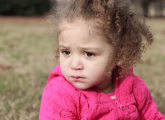Identifying and responding to prejudice in young children is a challenge that requires staff to consider carefully their own viewpoints, says Peter Baldock…
When a child says something that appears to be evidence of prejudice, we shouldn’t jump to the conclusion that they’ve been fed prejudiced views by someone… It’s equally likely that they’re trying to make sense of something unfamiliar and coming to wrong conclusions
There is always some difficulty in responding to inappropriate behaviour by young children, as it entails a balancing act between bringing the behaviour to an end and ensuring the child does not feel devalued. Apparent signs of prejudice pose even greater difficulties. Selfish behaviour may be seen as natural, though not desirable, but we tend to think that prejudice is something learned from adults in the child’s life and this is an added complication.
The type of prejudice is likely to affect the practitioner’s ability to respond constructively. If a little boy declares that “Girls can’t play football”, we may wonder about the best way to deal with his statement, but we’re unlikely to be hindered by any uncertainties we have ourselves – virtually no one now believes that there are any activities from which all women are by definition excluded. Similarly, if our own experience of dealing with people with disabilities is limited, we may feel some uncertainty about how such people can be included in the everyday world, but we’re likely to think that in principle that should be possible, and this will bolster our ability to deal with evidence of prejudice on this issue by children in the setting. It’s where there are differences of cultural background (probably underlined by differences of physical appearance) that we may feel least certain how to approach things.
The problem, in other words, lies with us rather than with the children or those adults outside the setting that may have influenced the children’s attitudes. In speaking of ‘us’ I include myself and practitioners who are not White British, as well as those who are – we’re all struggling with finding the best response to a world with people of different cultural backgrounds. It’s because we’re often uncertain of our own feelings that we may find those of children problematic.
The standard approach to helping children understand our multicultural society is to make use of resources and activities that underline that fact – welcome signs in different languages, books reflecting different cultural backgrounds, celebration of various festivals, etc. Such measures are fine in themselves, but if that’s all that happens, they can reflect an unarticulated idea that, on the one hand, there is normality and, on the other, there are people who have different cultures. This often goes along with highly simplified versions of what those other cultures are like, which can be as much an expression of prejudice as overtly hostile language.
There are two things we need to recognise. One is that everyone’s cultural identity is complicated, influenced by a variety of factors; the other is that getting on with other people entails skills at establishing communication in situations where there may not be a completely shared set of unspoken conventions about how to communicate.
The development of that kind of skill and appreciation of how difficult it is (rather than acquisition of a whole series of ‘facts’ about particular communities) provides the real starting point for dealing with what appears to be evidence that a child is prejudiced. Being ready to admit we can find it difficult ourselves, we should be better placed to appreciate the difficulties they are encountering when they encounter the unfamiliar.
Children under eight are developing their ability to understand that people see things from different perspectives. If children are told that a child about to join the nursery cannot walk very well because of an illness, they will probably accept that (and the child when she arrives) quite calmly. If no one explains this, they are likely to find the ways in which this child is different disturbing and deal with that disturbance by distancing or other hurtful behaviour.
So when a child says something that appears to be evidence of prejudice, we shouldn’t jump to the conclusion that they’ve been fed prejudiced views by someone. That may have happened, of course, but it’s equally likely that they are just trying to make sense of something unfamiliar and coming to wrong conclusions. If the apparent evidence of prejudice lies in something they say rather than in an action hurtful to another child, then it should be treated with respect as an attempt to learn and corrected as gently as a mistake in some other sphere would be. If the action has hurt someone else, the harm caused by the action has to be taken up as an issue (and reassurance given to the child that has been hurt), but only in the way that other kinds of hurtful behaviour would be, not on the assumption that the child has been in some way infected by racist ideology.
Above all, any incident where there is apparent evidence of prejudice should be used as the basis for re-examining the way the setting helps children to understand differences and how far our own difficulties with this issue have impeded progress. The immediate incident has to be tackled. Reflection on what it implies about our behaviour is just as important.
This exercise, taken from Peter Baldock’s recent book on cultural diversity, is intended to help practitioners reflect on their own attitudes…
Soon after the former MP Jack Straw had made a public statement about feeling uncomfortable when Muslim women came to his constituency surgery wearing headscarfs, especially in the form in which most of the face is covered, I overheard a conversation in Sheffield city centre. Two young white men were inviting passers-by to sign a petition against what Straw had said. A young white woman politely refused to sign it, explaining that she regarded the headscarf as a sign and instrument of male domination. I know Muslim women who would have regarded her relatively skimpy dress as a sign and instrument of her own sexual availability and, therefore, domination by men.
● What difference does it makes to your understanding of the issue that you are a man or a woman?
● If you wear a hijab yourself or have done in the past, what meaning does it have for you? If you do not, what meanings do you think it could have for women who wear it?
● How much does the clothing other people wear determine the ways you respond to them?
● Are there circumstances in which you would consider drastic alterations to your normal form of clothing to facilitate communication with others? Have you ever done this in practice? How did it feel?
This article briefly explores some of the themes in Peter Baldock’s book Understanding Cultural Diversity in the Early Years, which considers current debates around the alleged failure of multiculturalism, and encourages practitioners to utilise their own cultural backgrounds and experiences as a way of developing their teaching.

Modelled behaviour – How to set the best example
Editors picks

Social skills – How to help shy children develop them
Editors picks
